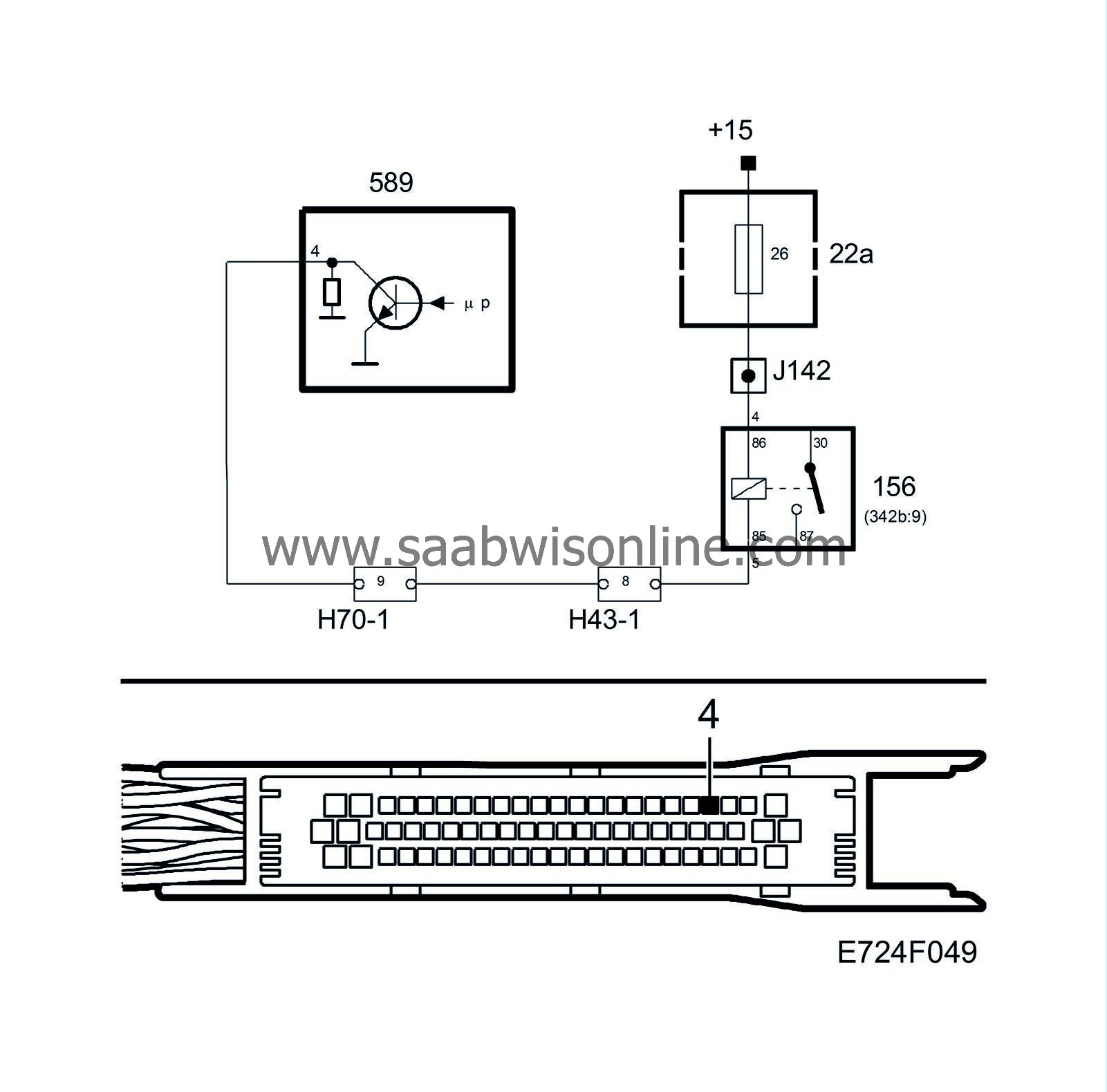P1656
Read the instructions below then
start the fault diagnostic procedure.
Symptom: A/C not working.
The compressor may run continuously.
A/C Relay Coil Circuit. Open / Short to Ground.

Fault symptoms
|
•
|
The compressor may run continuously.
|
On-Board Diagnostics
Type of diagnosis:
|
-
|
Continuous. However, it is interrupted once the fault criteria have been fulfilled and does not restart until the next driving cycle.
|
Enable criteria:
(Conditions that must be fulfilled for diagnostics to be performed.)
|
-
|
Ignition in position ON. A/C request has previously been on the bus on some occasion (cars with A/C). Output not active.
|
Fault criteria:
(When enable criteria have been fulfilled, diagnostics will check if the fault criteria have been fulfilled.)
|
-
|
Voltage on the output below 2V for more than 1s.
|
Dependents:
(Once fault criteria have been fulfilled, a number of other diagnostics must report OK before the diagnostic trouble code can finally be generated.)
System reaction to a fault:
(Once the fault criteria have been fulfilled, certain measures will sometimes be taken.)
|
-
|
Air mass control A/C compensation blocked.
|
OK report:
(This diagnosis may be included as a dependent to another diagnosis and must therefore report OK even if it is continuous. The OK report is also used in fault handling to count down the fault counter.)
|
-
|
Enable criteria fulfilled. A/C (Bus from DICE) ON and fault criteria not fulfilled within 1.5s.
|
Fault handling:
(Refer to section “Fault diagnosis, general” for more information.)
|
-
|
Type III. Does not turn on CHECK ENGINE.
|
Diagnostic help
Fault diagnosis concerns an electrical fault in the connecting leads or in the relay.
Diagnostic tool functions related to this fault:
|
•
|
Activation of output for A/C relay.
|
Refer also to the description of activations under ”Fault diagnosis, general” for more information.
Check the wiring
Jiggle the wiring harness at several points and in different directions to check if there are intermittent breaks and short-circuits in the leads. Observe the multimeter, test lamp or diagnostic instrument during the test.



